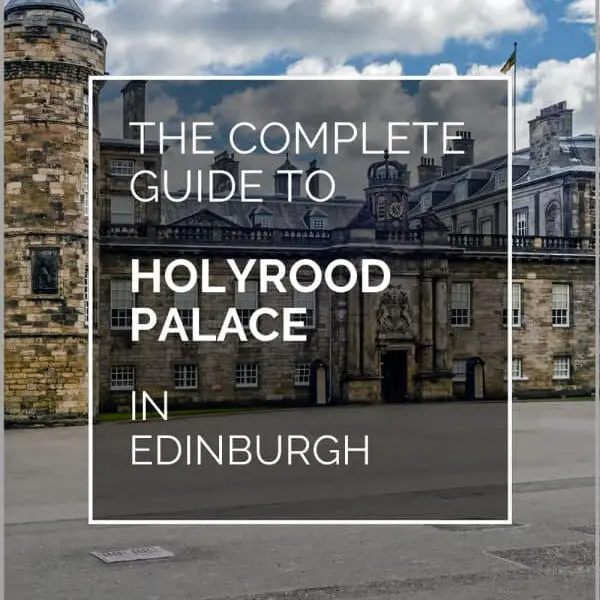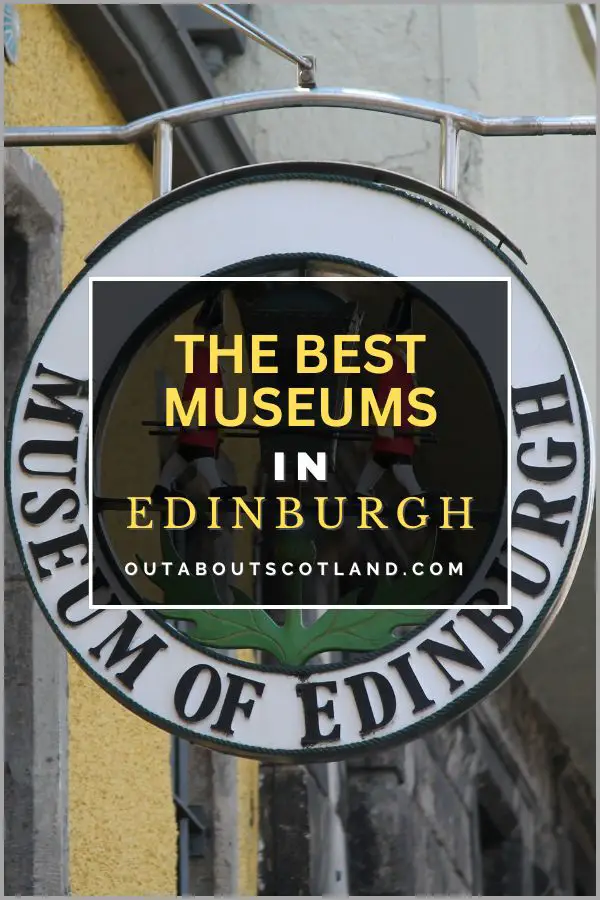Holyrood Palace, also known as the Palace of Holyroodhouse, is the official residence of the British monarch in Scotland. Located at the bottom of the Royal Mile in Edinburgh’s Old Town, at the opposite end of Edinburgh Castle, this grand palace is used by the King for state ceremonies and official entertaining.
Tourists can explore 14 magnificent state apartments, the romantic ruins of the 12th-century Holyrood Abbey, and the remarkable royal gardens, all with a complimentary multimedia tour. In addition, visitors can look forward to seeing the Great Gallery, the Throne Room, and the Morning Drawing Room.
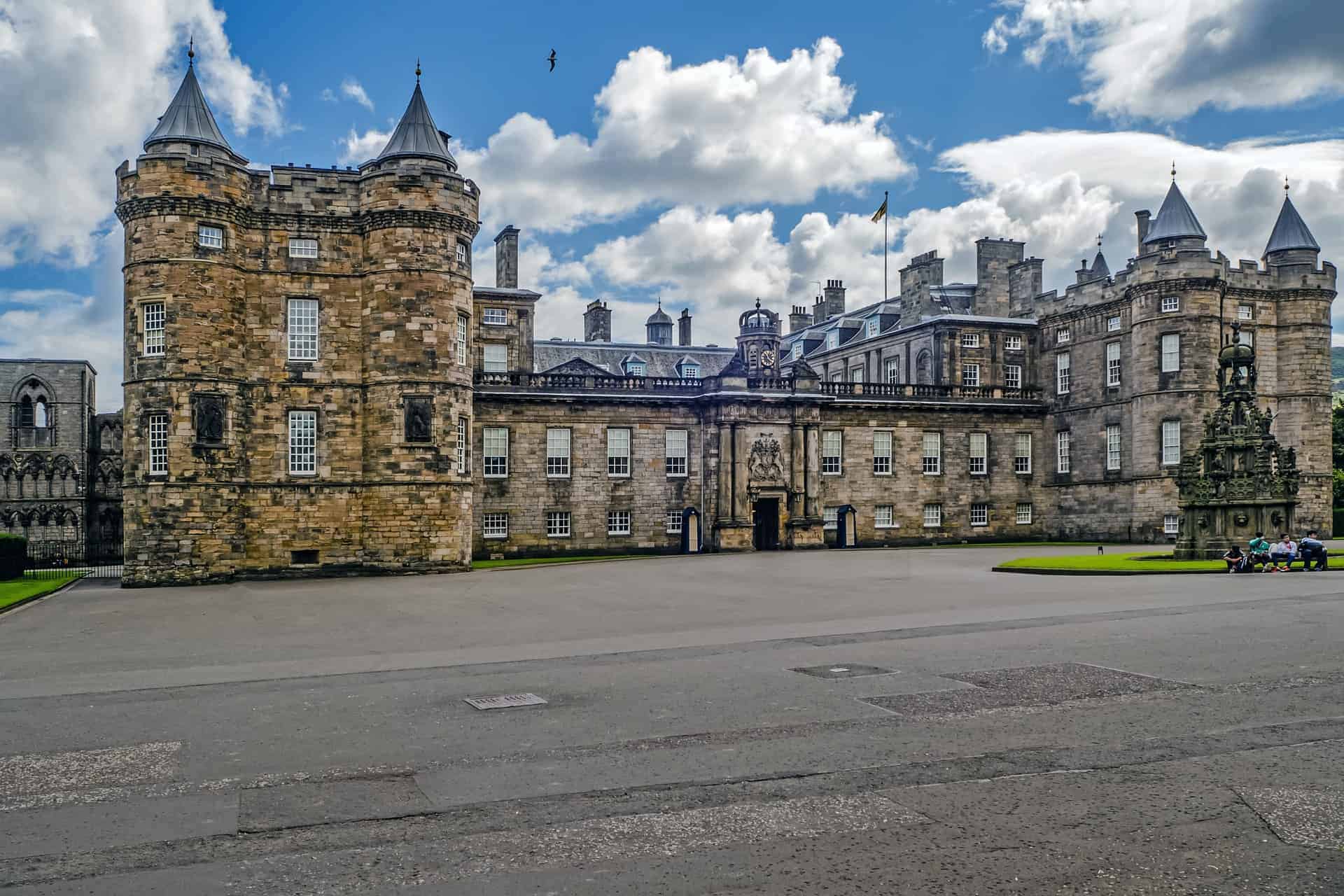
| Address: | Canongate, Edinburgh, EH8 8DX |
| Opening Hours: | 1 November - 31 March: 09:30 to 15:15 1 April - 31 October: 09:30 to 16:30 |
| Admission Price: | Adult: £18.50 Young Adult: (18-24) £12 Child: £10.50 |
| Parking: | Paid car park on Queens Drive |
| Contact: | 0303 123 7306 |
| Facilities: | Gift shop, cafe, toilets, guided tours, disabled access |
| Photos: | YouTube Video |
| BUY TICKETS | Click here to purchase |
Overview
The palace of Holyrood House (as it’s officially known) is the main residence of the British monarchy in Scotland. The King spends one week at the palace at the beginning of each summer, and many tourists wait excitedly for the royal flag to be raised, which indicates he’s in residence.
Holyrood Palace is certainly an impressive place to visit. As you enter the front courtyard via the ticket office you’re immediately presented with the palatial entrance to the front, Holyrood Park to the right, and the ruins of Holyrood Abbey to the left.
A self-guided tour takes you to the Great Gallery, the 17th-century king’s apartments, and the 16th-century apartments where Mary Queen of Scots lived. Other rooms that are open to the public are the royal bed chambers and several royal drawing rooms, as well as the dining room with its extensive collection of silverware. You won’t believe so many forks, spoons, and knives could ever be used in one sitting.
The palace offers lots of activities to visitors, including viewing the Throne Room and the Great Gallery, as well as exploring the ruins of Holyrood Abbey and the beautiful palace gardens. There’s also an excellent café, a superb gift shop, and an exhibition of master paintings in the Queen’s Gallery.
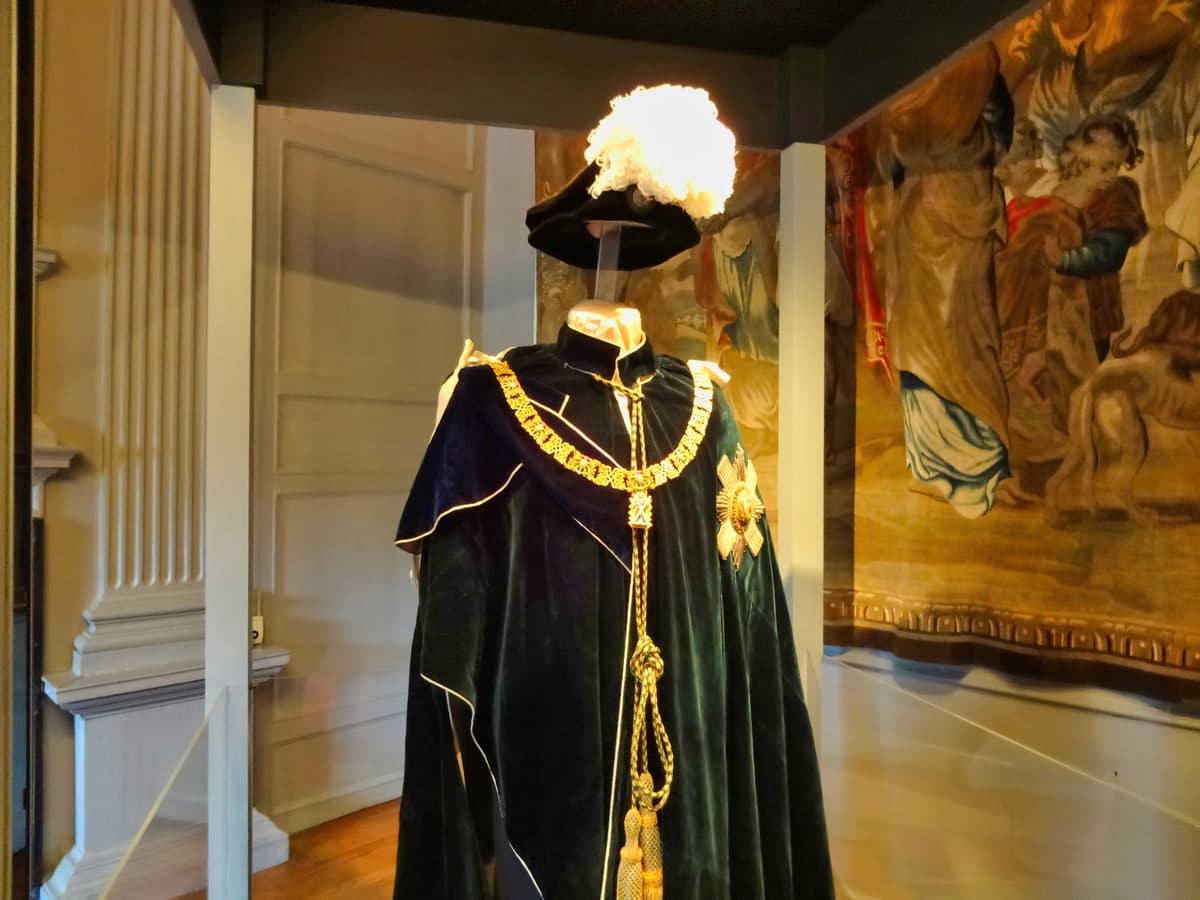
The Highlights
1: The state apartments offer visitors a chance to explore the grandeur of the palace. They include the throne room, the morning drawing room, and the Great Gallery which contains portraits of Scottish monarchs.
2: The Chambers is where Mary Queen of Scots lived in the 16th century. It’s full of history, including the spot where her private secretary was murdered. Take a good look at the floor as you can still see the blood stains.
3: The Abbey, which dates back to 1128, is a ruined yet beautiful structure. The gardens surrounding the palace are stunning, covering approximately 10 acres, and are home to a variety of different plants and flowers.
Visiting Tips
1: If you ask for your ticket purchase to be treated as a donation you’ll get free re-admittance to the palace for one year. Keep hold of your ticket as you’ll have to show it on each return visit.
2: I wouldn’t eat in the café if you were just after a quick snack as it’s quite expensive. There are much cheaper cafes elsewhere in Edinburgh. Avoid the Royal Mile, though, as many of the pubs and restaurants are overpriced tourist traps.
3: The café and the gift shop are both excellent. With regards to the shop, it’s a cut above most gift shops in the city so it’s a great place to pick up a souvenir of your time in Edinburgh.

Tourist Information
As you wander through the palace’s rooms, you’ll be amazed by the intricacy of the needlework on the tapestries covering the walls and the beautiful paintings that seem to be shoehorned into every other available space. The level of opulence is astounding, and fine china, beautiful artwork, and rich fabrics seem to cover every surface. The king’s bed chamber in the east wing is worth visiting just for the artwork that’s been carved into the ceiling plasterwork, so while you’re looking around the room, remember to look up as well.
The most substantial room in the palace is the Great Gallery which is decorated with over 100 paintings of various Scottish monarchs. Although it primarily hosts banquets today, it has served as a chapel, a location for the election of Scottish peers, and even a ballroom in the past.
Leaving the Great Gallery, you can access the northwest tower which is where the doomed Mary Queen of Scots and her husband, Lord Darnley, lived. History seems to ooze out of every wooden panel and floorboard in this part of the palace, and many display cabinets house elaborate examples of jewellery and clothing from the era.
After wandering around the inside of the palace, make sure you visit the adjoining gardens. Set over 10 acres, they feature a stunning collection of roses, manicured lawns, and examples of Scottish plant life laid out in the formal style of the 19th century.
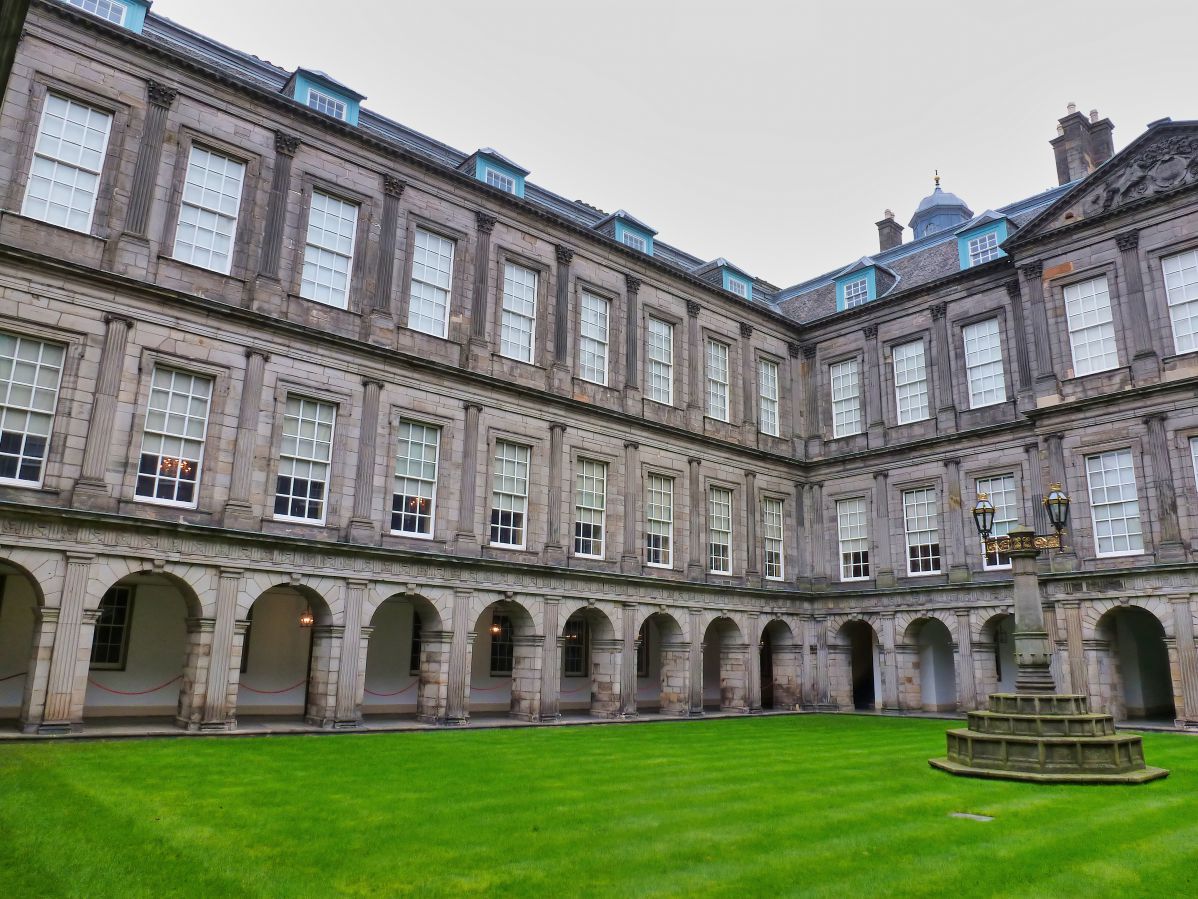
In summer, these gardens are used for the annual royal summer party, where selected individuals are invited to the palace at the request of the King. It’s a long-standing joke around Edinburgh that you’ll know who’s been invited to the party because they’ll be showing off their car passes till Christmas!
The ruins of Holyrood Abbey are the last section of the palace to explore, and although the roof has long gone, the size of the building is still impressive. Constructed in 1128 by King David I, the abbey hosted many important events including the parliament of Robert the Bruce, the marriage of King James II, and the marriage of King James III.
The Queen’s Gallery is situated near the entrance to the palace where it displays collections of old masterpieces that you won’t be able to see in any other gallery in Scotland. The exhibition is themed and rotates on a regular basis, so if you revisit later in the year you’ll probably see an entirely new collection of paintings.
Finally, no visit to an attraction like this would be complete without a visit to the café, which is, of course, top-notch. The quality of the food on offer is amazing, and although it’s a little pricey, it’s well worth the expense. Before you leave, don’t forget to check out the gift shop which has some of the best quality souvenirs I’ve ever seen in a Scottish tourist attraction.
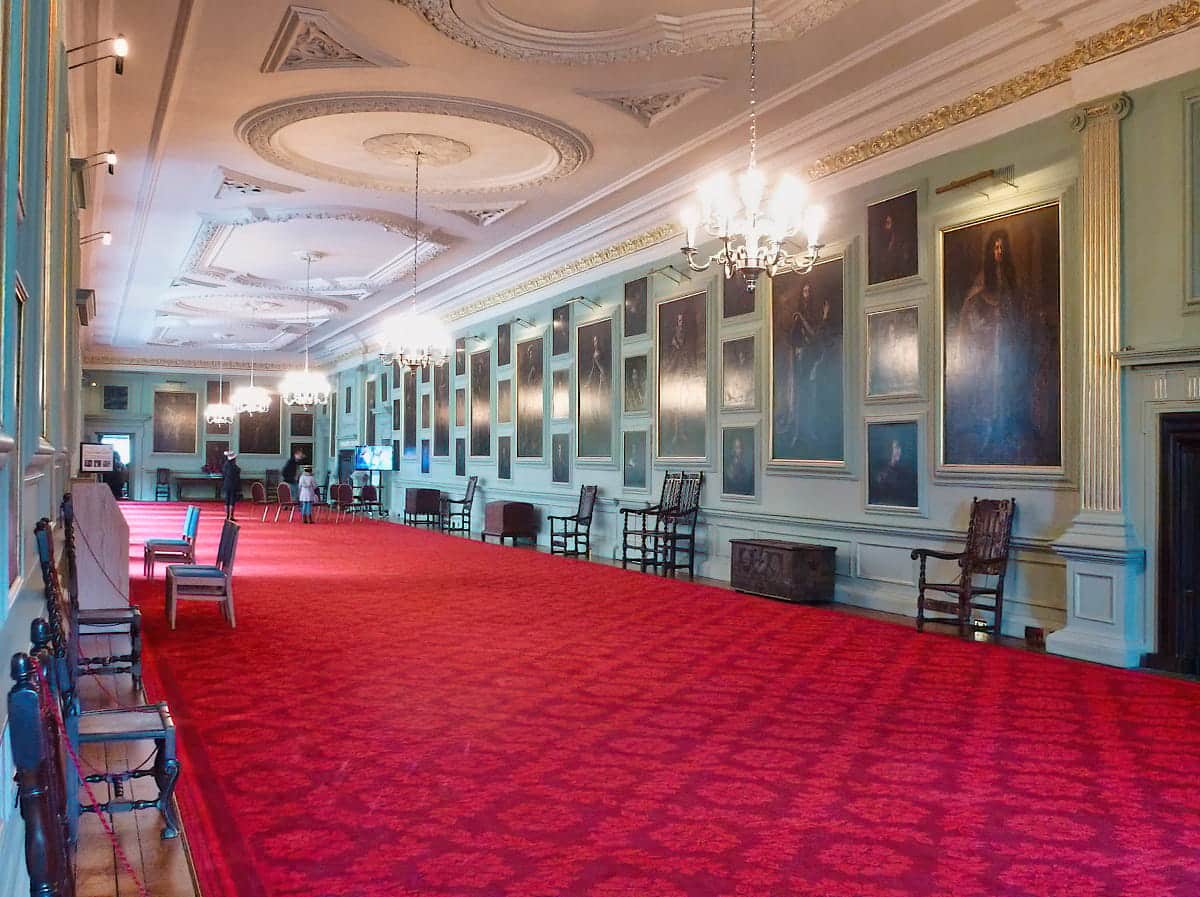
History
The story of Holyrood Palace begins with the Augustinian Holyrood Abbey, which was founded in 1128. Being so close to Edinburgh Castle, the abbey was used as a royal household and administration centre, with Robert the Bruce holding sessions of parliament there in the early 14th century.
By the early 16th century, the construction of a new Gothic-style palace had been undertaken on the orders of King James IV who also oversaw the construction of the gatehouse and the royal apartments. Following this, a chapel was built in the south wing, while the west wing was converted into a library and an extension of the rooms in the royal apartments.
Oliver Cromwell’s English troops set fire to the palace’s east range in 1650, which forced the abandonment of the palace’s eastern wing. After Charles II was throned in 1660, a plan of reconstruction began which included the addition of a southwest tower housing a council chamber and a gallery to link the king and queen’s apartments.
Reconstruction works for the palace began in 1671 and took seven years to complete, with the finished building now featuring the square design and central quadrangle that we recognise today. The imposing quadrangle is enormous, 230 feet in length with floors that vary in height from two to three stories. Suffice it to say, wherever you view Holyrood Palace, you can’t fail to be impressed by it.
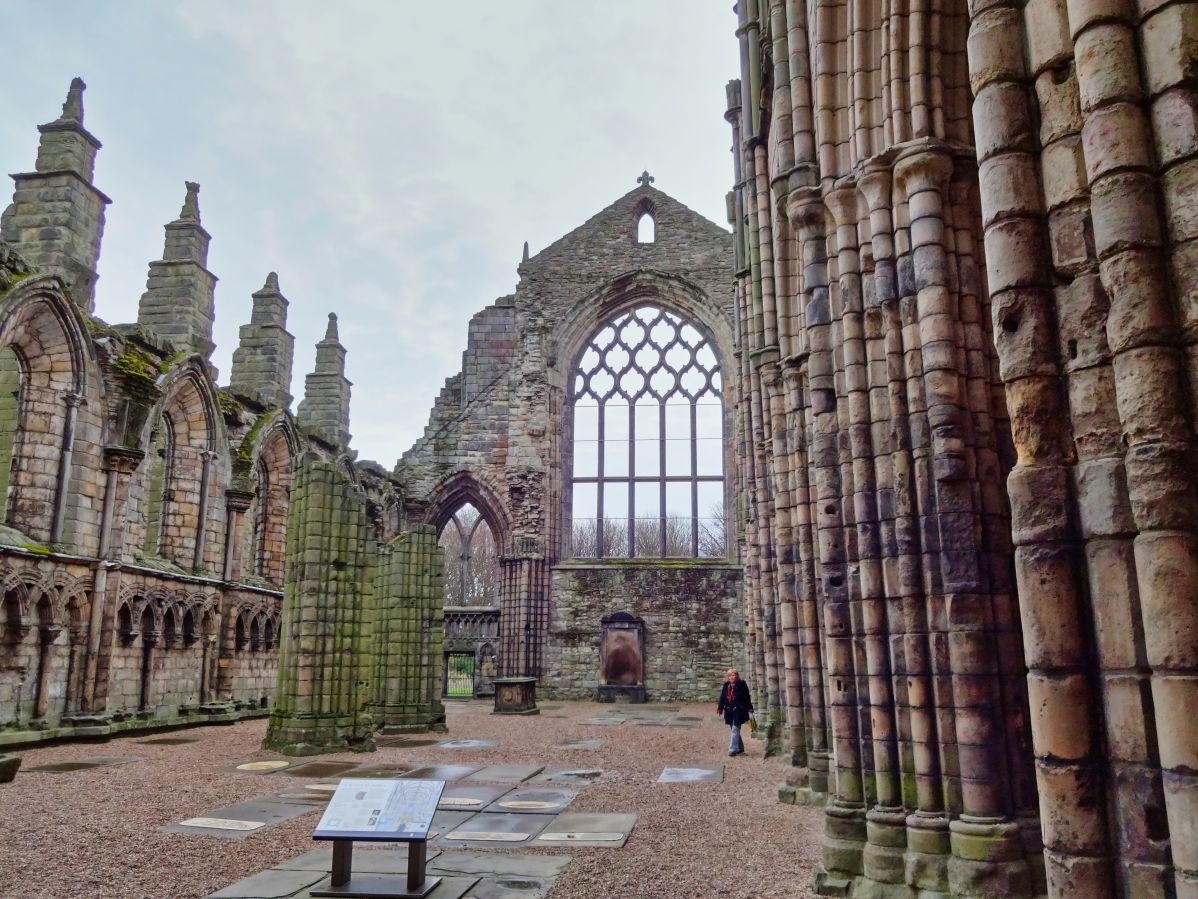
Things to Do
Royal State Apartments Tour: Walk through the same halls as Scotland’s royalty in the Royal State Apartments. Each room is filled with history and adorned with intricate tapestries and ornate carvings. You’ll witness the splendour and grandeur of Scotland’s royalty and learn about the kings and queens who once lived there. Don’t miss the Great Gallery, filled with portraits of legendary kings of Scotland.
Mary Queen of Scots Chambers: Discover the life of one of Scotland’s most captivating figures, Mary Queen of Scots. Explore her private chambers and get a glimpse into her tumultuous reign and personal life.
The Abbey and Gardens: Stroll through the ruins of Holyrood Abbey and the beautiful palace gardens. The Abbey, founded in 1128, provides a serene experience while the gardens offer a quiet escape amongst manicured flower beds with stunning views of Holyrood Park.
Audio Guide Tour: Embark on a self-guided tour with an audio guide. You’ll hear fascinating stories of the palace’s past, its residents, and its significance in Scottish history. The guides are included with the ticket price and come in a range of language options.
The Queen’s Gallery: Visit the Queen’s Gallery, showcasing changing exhibitions from the private Royal Collection. Art enthusiasts will love seeing works from renowned artists and priceless artefacts from across the globe that cannot be seen anywhere else.
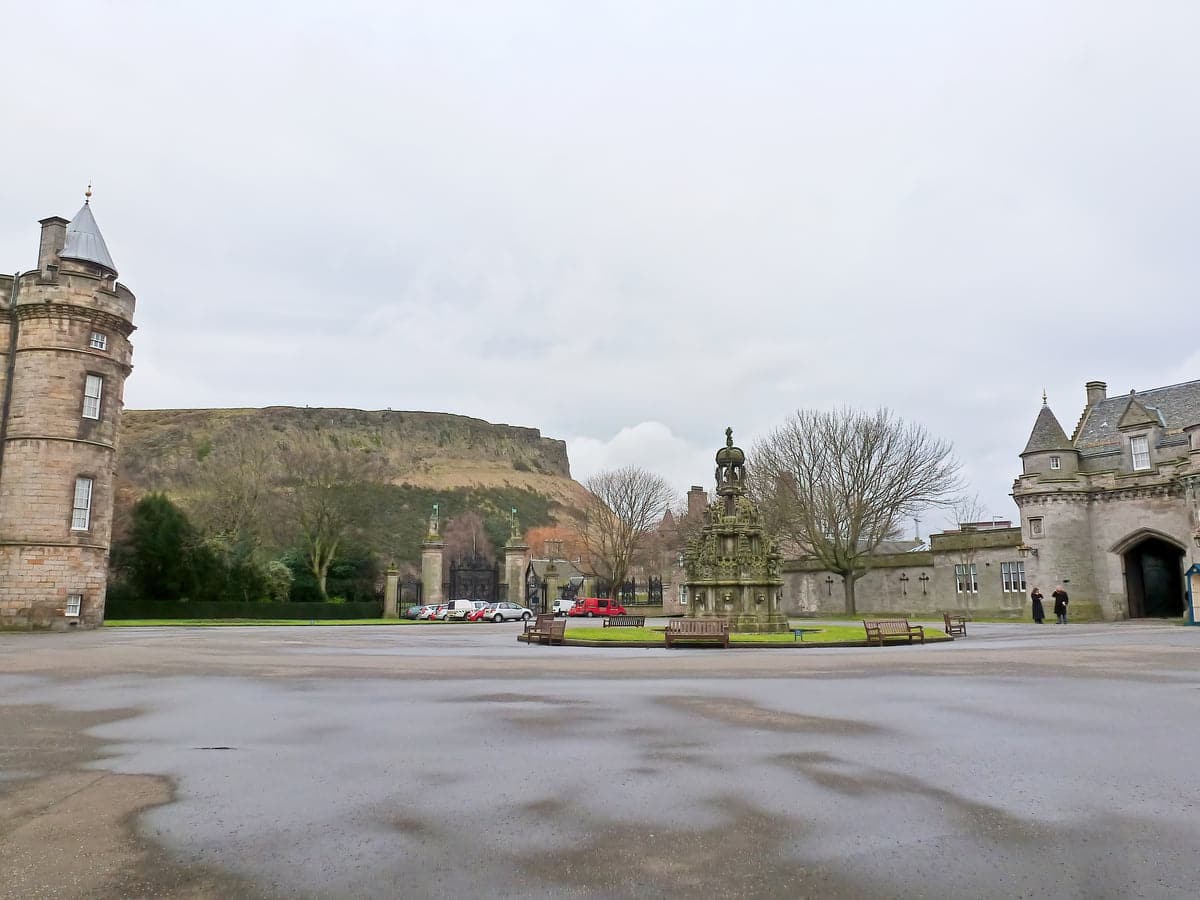
Things to Do Nearby
Holyrood Park. Edinburgh EH8 8AZ. 2-minute walk.
One of the largest city parks in the world, Holyrood Park covers an area of more than 650 acres. The highest point in the park is Arthur’s Seat which is a long-extinct volcanic plug. Popular areas to visit are Salisbury Crags and Duddingston Loch.
Scottish Parliament Building. Edinburgh EH99 1SP. 1-minute walk.
The official location for the Scottish government. The ultra-modern building is open to the public for guided tours and the viewing area allows the public to watch live debates in progress.
Calton Hill. Edinburgh EH7 5AA. 17-minute walk.
One of the most popular free attractions in Edinburgh. Calton Hill offers superb views across the city and is home to the recently renovated observatory and restaurant. There are several monuments on Calton Hill including Nelson’s Monument and the National Monument of Scotland.
The Royal Mile. 1-minute walk.
Historic street in Edinburgh that connects Holyrood Palace to Edinburgh Castle. The Royal Mile is famed for its medieval architecture and narrow closes and wynds. It contains a wide selection of tourist attractions, shops, restaurants and cafés.
Dynamic Earth. Holyrood Rd, Edinburgh EH8 8AS. 4-minute walk.
A family-oriented science-themed attraction that aims to educate and entertain visitors with a collection of displays and exhibits. There is a café on-site, a 360-degree cinema, a café and more.
Frequently Asked Questions
Is Holyrood Palace worth visiting?
Holyrood Palace is definitely worth visiting. The palace is one of the highest-rated tourist attractions in Scotland, welcoming half a million visitors annually.
The palace is rated 4.5/5 on TripAdvisor and is placed at number 5 of 488 things to do in Edinburgh. The palace is well known for its beautiful architecture, fascinating audio tour, magnificent gardens, and one of the finest art collections in Britain.
Is Holyrood Palace owned by the Royal Family?
The Palace of Holyroodhouse, often referred to as Holyrood Palace, is the official residence of the British monarch in Scotland. However, it’s not owned by the Royal Family in their private capacity. Instead, it’s part of the Crown Estate which is a collection of lands and holdings in the territories of England, Wales, Scotland, and Northern Ireland within the United Kingdom.
Did Mary Queen of Scots stay at Holyrood Palace?
Mary Queen of Scots lived at Holyrood Palace in Edinburgh between 1561 and 1567.
What does the word Holyrood mean?
Holyrood is an old Scots word that means cross, or crucifix, specifically one that is placed on the rood screen in a church.

